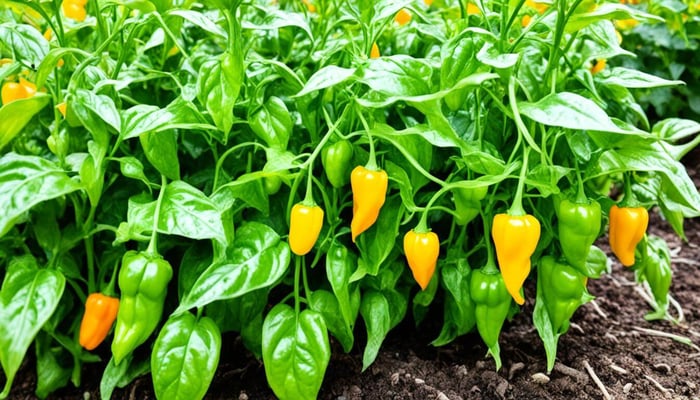When it comes to spices, there is often confusion between cayenne pepper and red pepper. Are they the same? Are they interchangeable? Or do they have distinct differences that can elevate your dishes to new heights? Prepare to have your taste buds tantalized and your culinary knowledge challenged as we unravel the mysteries of these fiery ingredients! Let's explore; is cayenne pepper the same as red pepper. Add some spice and flair to your vegetable garden this year.
- Cayenne and red pepper are both nightshade family members but have different varieties and heat levels.
- Cayenne pepper is known for its vivid red color and spicy flavor, while red pepper encompasses a wider range of peppers, including mild red bell peppers and hot chili flakes.
- Cayenne pepper is often used in powder form to add heat to dishes, while red pepper flakes are commonly sprinkled on pizza or added to pasta sauces.
- Understanding the differences between cayenne and red pepper allows you to make informed choices in your culinary creations.
- Incorporating these peppers into your diet can offer health benefits such as anti-inflammatory properties and a rich source of vitamins and antioxidants.
Cayenne Pepper Seeds
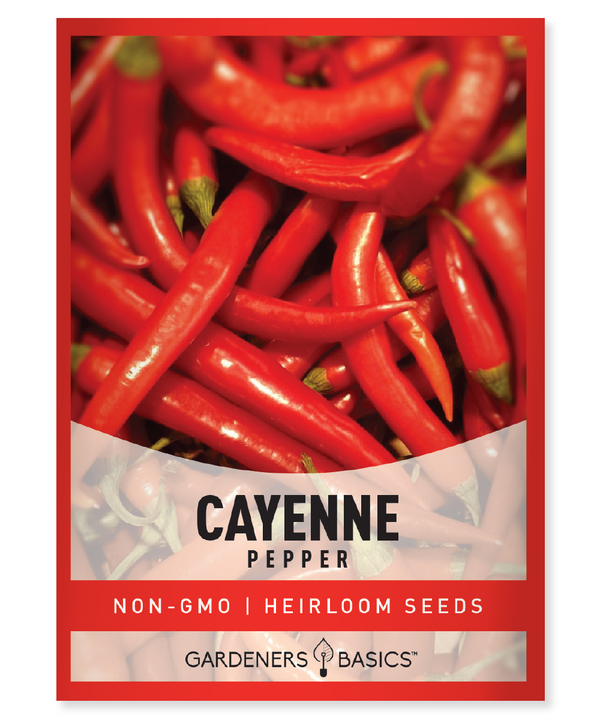
$2.49
Cayenne Pepper Seeds - Heirloom, Non-GMO, Non-Hybrid, Open-Pollinated | Easy to Grow Hot Peppers Discover the thrill of growing your own spicy Cayenne Peppers with our premium heirloom seeds! Perfect for home gardens, these non-GMO, non-hybrid, open-pollinated seeds are your… read more
Cayenne Pepper and Red Pepper: An Introduction
Before we delve into the specifics, it's important to understand that Cayenne Pepper and Red Pepper belong to the nightshade family of plants. They come in different varieties, each with its own heat level and distinct flavor profile.
Peppers and red peppers are members of the nightshade family, a diverse group of plants that includes tomatoes, eggplants, and potatoes. Nightshade plants are known for their vibrant colors and unique flavors. Cayenne Pepper and Red Pepper, both part of this family, offer a fiery kick to any dish.
When it comes to heat, peppers are renowned for their capsaicin content. Capsaicin is the compound responsible for the pungency and heat of peppers. The heat level of peppers is measured using the Scoville scale, which assigns a numerical value to indicate spiciness. Cayenne Pepper and Red Pepper vary in their heat levels, offering different intensities to suit various palates.
"Peppers are like a colorful symphony of flavors and heat, adding depth and excitement to any culinary creation."
The Nightshade Family: A Diverse Bunch
The nightshade family, scientifically known as Solanaceae, comprises over 2,700 species of plants. While some nightshades are consumed as fruits or vegetables, others, like Cayenne Pepper and Red Pepper, are prized for their fiery flavors and culinary versatility.
Different Varieties, Different Characteristics
The nightshade family has various pepper varieties, each with unique characteristics. With its slender shape and vibrant red color, Cayenne Pepper is highly favored in spice blends and as a standalone seasoning. On the other hand, Red Pepper encompasses a broader range of peppers, from mild bell peppers to spicy chili flakes.
These peppers differ not only in terms of their heat level but also in flavor profile. Cayenne Pepper delivers a distinct spicy taste with a hint of sweetness, making it a popular choice in hot sauces and spicy stir-fries. Red Pepper, in contrast, offers a milder flavor profile, ranging from sweet and tangy in red bell peppers to smoky and intense in chili flakes.
The Scoville Scale: Measuring Heat Levels
As mentioned earlier, the heat level of peppers is measured using the Scoville scale. This scale assigns numerical values to peppers based on their capsaicin content. The higher the Scoville heat units (SHU), the spicier the pepper. Let's take a look at the heat levels of Cayenne Pepper and Red Pepper:
| Pepper Variety | Scoville Heat Units (SHU) |
|---|---|
| Cayenne Pepper | 30,000 - 50,000 SHU |
| Red Pepper | Varies widely depending on the type |
While cayenne pepper falls within a specific SHU range, the heat level of red pepper can vary significantly. Some red pepper varieties can reach or exceed 100,000 SHU, providing a fiery kick to any dish.
The Appeal of Peppers in the Kitchen
With their vibrant colors and distinct flavors, peppers are a staple in many cuisines worldwide. Whether cooking up a sizzling stir-fry or adding a touch of spice to a hearty chili, Cayenne Pepper and Red Pepper can elevate your dishes to new heights.
With its concentrated heat and bold flavor, Cayenne Pepper is commonly used in Mexican and Asian cuisines. It adds an intense kick to salsas, enchiladas, and curries, infusing dishes with a spicy depth of flavor.
Red Pepper offers various culinary possibilities in its various forms. Red bell peppers, with their sweet and crunchy texture, are delicious when roasted, stuffed, or added to salads. On the other hand, red pepper flakes can be sprinkled over pizzas or stirred into pasta sauces for an extra kick.
Embracing the Heat
Cayenne Pepper and Red Pepper may have unique characteristics, but they can also be used interchangeably in certain recipes. The choice between the two ultimately comes down to personal preference and the desired heat level. Whether you crave a fiery intensity or a milder touch, these peppers offer a spectrum of flavors and heat profiles to suit every palate.
Experimenting with Cayenne Pepper and Red Pepper allows you to explore the vast world of spicy cuisine and discover new taste sensations. So, embrace the heat and let these flavorful peppers spice up your culinary adventures!
Pepper Seed Assortment | 8 Variety Pack
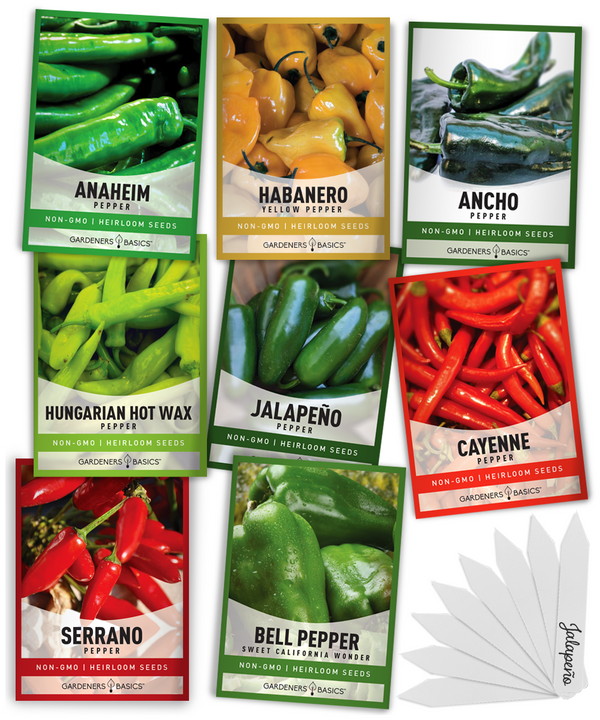
$15.95
8 Pepper Seeds Variety Pack – Heirloom, Non-GMO, Open-Pollinated, Non-Hybrid Seeds Elevate your garden with our 8 Pepper Seeds Variety Pack! This premium selection includes a mix of heirloom, open-pollinated, non-hybrid, non-GMO pepper seeds, perfect for beginner and experienced gardeners.… read more
Cayenne Pepper: A Fiery Spice
When it comes to adding a spicy kick to your dishes, cayenne pepper is the perfect choice. With its vibrant red color and bold flavor, this fiery spice is a favorite among enthusiasts. Derived from small, red chilis, cayenne pepper is widely available in powder form, making it convenient to incorporate into various recipes.
One of the defining characteristics of cayenne pepper is its high heat level. On the Scoville scale, which measures the spiciness of peppers, cayenne pepper ranks quite high. While there can be some variation in heat level depending on the specific variety, cayenne pepper generally delivers a punch of spice to any dish.
Cayenne pepper can add a delightful spicy flavor to various cuisines if you dare to embrace the heat. Whether you're preparing Mexican dishes like tacos and enchiladas or experimenting with Asian stir-fries and curries, a pinch of cayenne pepper can elevate the taste and intensity of your culinary creations.
To give you a better idea of the heat levels of various peppers on the Scoville scale, take a look at the table below:
| Pepper Variety | Scoville Heat Units (SHU) |
|---|---|
| Cayenne Pepper | 30,000 - 50,000 SHU |
| Jalapeno Pepper | 2,500 - 8,000 SHU |
| Habanero Pepper | 100,000 - 350,000 SHU |
As you can see, cayenne pepper falls in the middle of the heat spectrum, providing a spicy flavor without being overwhelmingly hot. Its versatility and moderate heat make it a great choice for novice and experienced cooks who want to add a little spice to their dishes.
So, the next time you want to spice up your meal, reach for a bottle of cayenne pepper and enjoy the fiery kick it brings to your favorite recipes.
References:
- "What is the Scoville Scale?" The Spruce Eats. [Accessed on October 20, 2021]. Available at: https://www.thespruceeats.com/what-is-the-scoville-scale-1806363
- "Cayenne Pepper." The Spice House. [Accessed on October 20, 2021]. Available at: https://www.thespicehouse.com/products/cayenne-pepper-powder
Red Pepper: More Than Just Spice
Regarding red pepper, we're not just talking about one specific variety. Red pepper encompasses a broader range of peppers, each with unique characteristics and culinary uses. Let's explore two popular forms of red pepper: red bell peppers and chili flakes.
The Versatile Red Bell Peppers
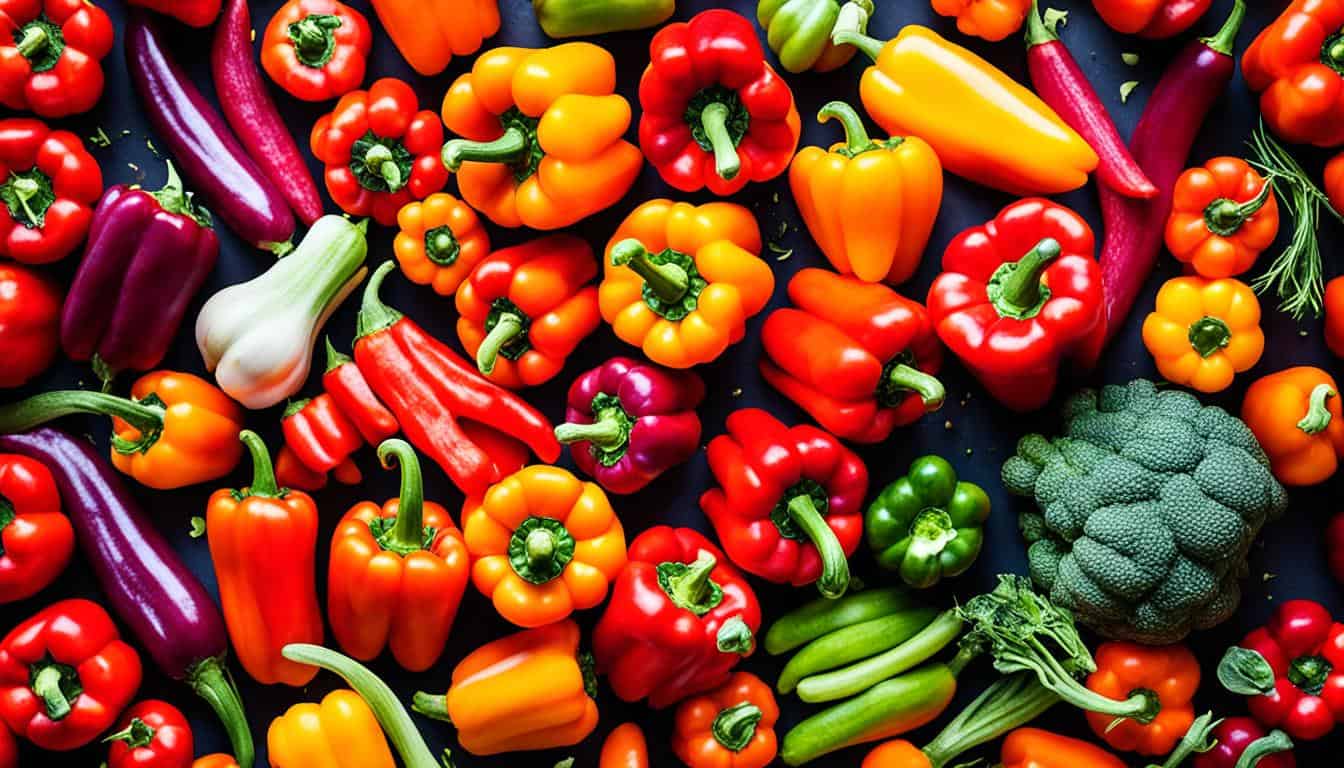
Red bell peppers are vibrant and sweet, adding color and flavor to any dish. They are the mildest peppers in the red pepper family, making them versatile ingredients in both raw and cooked recipes. They are excellent for salads, stir-fries, and roasted dishes.
Here's a quick nutritional overview of red bell peppers:
| Nutrient | Amount per 100g |
|---|---|
| Calories | 31 |
| Vitamin C | 127% |
| Vitamin A | 9% |
| Potassium | 7% |
Due to their mild flavor, red bell peppers can be enjoyed by everyone, even those who don't typically enjoy spicy foods.
Fiery Chili Flakes
"Adding a pinch of chili flakes is one of my favorite ways to spice up any dish!"
Chili flakes are another form of red pepper that adds heat and intensity to countless recipes. They are made from dried and crushed hot red chilis, delivering a fiery kick to your taste buds. Whether sprinkled on top of pizzas, pasta dishes, or into rubs and marinades, chili flakes bring a punch of heat to your cooking.
Here's a glimpse into the heat scale of different chili flakes:
| Chili Flake Type | Scoville Heat Units (SHU) |
|---|---|
| Crushed Red Pepper | 20,000 - 30,000 SHU |
| Thai Chili Flakes | 50,000 - 100,000 SHU |
As you can see, the heat level of chili flakes can vary significantly depending on the type of flake used. If you're not a fan of intense spiciness, using them sparingly is essential.
So whether you're looking for vibrant sweetness or fiery heat, red pepper offers something. Incorporate red bell peppers into your favorite recipes for a pop of color and mild sweetness, or add a sprinkle of chili flakes to elevate the heat level of your dishes. The choice is yours!
Different Forms, Different Uses
Understanding their different forms and uses is essential when incorporating cayenne and red pepper into your culinary creations. Let's explore how each form adds unique flavor and heat to various dishes.
Cayenne Pepper Powder: Spice Up Your Kitchen
Cayenne pepper powder is a staple in many kitchens and is known for its fiery heat. Made from ground cayenne peppers, this vibrant red powder adds a spicy kick to a wide range of dishes, including soups, sauces, and marinades. Just a pinch of cayenne pepper powder can elevate the flavor profile of your favorite recipes.
Hot Pepper Seeds For Planting | 5 Variety Pack
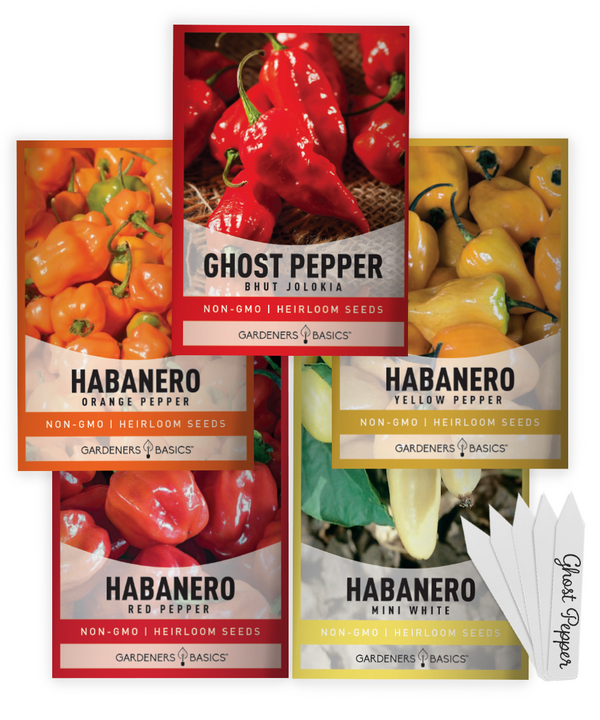
$9.95
Heirloom Hot Pepper Seeds – 5 Variety Pack, Includes Habanero & Ghost Pepper Seeds Spice up your garden with our 5 Hot Pepper Seeds Variety Pack—a must-have for any hot pepper lover or home gardener! This premium collection includes heirloom, non-hybrid,… read more
Red Pepper Flakes: A Versatile Spice
Red pepper flakes are popular for adding heat and flavor to dishes. These small crushed flakes are often sprinkled on top of pizzas or added to pasta sauces to give them a spicy kick. Red pepper flakes offer a milder heat than cayenne pepper powder, making them a versatile option for those who prefer a less intense spiciness.
Fresh Peppers: Bursting with Flavor
In addition to their dried and powdered forms, fresh peppers play a crucial role in culinary creations. Red bell peppers, for example, are enjoyed both raw and cooked. Their sweet and crisp flavor adds a delightful touch to salads, stir-fries, and other dishes. Whether you want to add color or boost the flavor, fresh peppers like red bell are a fantastic choice.
Incorporating cayenne pepper powder, red pepper flakes, and fresh peppers into your cooking can elevate your dishes, adding heat and flavor in unique ways. Experiment with these different forms to discover your favorite combinations and spice up your kitchen.
Heat Levels and Scoville Units
Regarding heat, both chili pepper and red pepper can pack a punch. The Scoville heat units (SHU) measure the spiciness of peppers. Cayenne pepper typically ranges between 30,000 to 50,000 SHU, while some types of red pepper can go up to 100,000 SHU or more, depending on the variety.
Understanding the Scoville heat units can help you gauge the intensity of peppers and choose the right one for your desired spice level. Whether you're a heat-seeking chili lover or prefer a milder kick, it's important to consider the SHU when cooking with chili or red pepper to balance the flavors of your dishes.
Origin and Cultivation
Cayenne pepper traces its roots back to South America, where it has been grown and cherished for centuries. The region's vibrant climate and fertile soils provide optimal conditions for cultivating this fiery spice.
Today, cayenne pepper is cultivated worldwide, with different regions contributing to its diverse flavors and heat levels. One popular source for cayenne pepper seeds is Gardeners Basics, a renowned supplier with a wide selection of heirloom pepper varieties.
Heirloom peppers, known for their genetic purity and unique characteristics, produce high-quality cayenne pepper powder. These seeds offer dedicated gardeners the opportunity to grow their own peppers and experience the flavors of this South American treasure.
Whether you're a seasoned gardener or a novice enthusiast, exploring the world of heirloom peppers and cultivating your cayenne pepper can be a rewarding journey into South America's rich history and flavors.
Quote:
"Cayenne pepper's origin in South America is deeply intertwined with the region's culinary traditions, where the heat and spice of this pepper have been celebrated for generations." - Gardeners Basics

Exploring Culinary Uses
Both cayenne pepper and red pepper can add a delightful kick of heat and spice to your favorite dishes. Let's dive into how these versatile spices can elevate your culinary creations.
Cayenne Pepper Powder
In powdered form, Cayenne pepper is a popular choice in Mexican and Asian cuisines. Adding just a small amount to salsas, stir-fries, and curries can enhance the flavors and provide satisfying heat to your dishes.
For those who love a dash of spice, cayenne pepper powder is a must-have in the kitchen. Its vibrant red color and intense flavor make it perfect for adding a fiery touch to various meals.
Red Pepper Flakes
If you're a fan of Italian cuisine, red pepper flakes will likely be your go-to spice. Sprinkle these fiery flakes on your favorite pasta, pizza, or sauces to elevate them to the next level.
Red pepper flakes offer a unique heat and texture that complements savory dishes and adds flavor. The small flakes release a gradual and lingering heat, allowing you to control the level of spiciness in each bite.
Using Spices in Moderation
It's essential to use both cayenne pepper powder and red pepper flakes in moderation because their spiciness can quickly overpower a dish. Just a sprinkle or a pinch is often enough to achieve the desired heat level and enhance the overall flavor profile.
So, the next time you're in the kitchen, don't shy away from experimenting with these flavorful spices. Whether you choose cayenne pepper powder or red pepper flakes, the key is understanding the heat level and using them judiciously to create memorable culinary experiences.
Now that we've explored the culinary uses of cayenne and red pepper, it's time to delve deeper into their unique characteristics and embrace the differences they bring to our dishes.
| Cayenne Pepper Powder | Red Pepper Flakes |
|---|---|
| Used in Mexican and Asian cuisines | Ideal for Italian dishes and sauces |
| Intense heat and vibrant red color | Gradual and lingering heat with a burst of flavor |
| Enhances salsas, stir-fries, and curries | Elevates pasta dishes, pizza, and sauces |
| It must be used in small amounts to avoid overpowering | Provides a controlled level of spiciness |
Embracing the Differences
While cayenne and red pepper are sometimes used interchangeably in recipes, it's important to note that they have distinct characteristics. Cayenne pepper powder offers a concentrated heat and vibrant red color, while red pepper flakes provide a milder heat and texture. Understanding these differences can enhance the flavor profile of your dishes.
Cayenne and red pepper flakes can be excellent choices when adding heat to your recipes. However, it's essential to recognize how their unique qualities can impact your culinary creations.
Concentrated Heat and Vibrant Color
Cayenne pepper powder is made from ground cayenne chilis, delivering a fiery kick to your dishes. With its concentrated heat, this spice can elevate the flavor of your recipes while adding a vibrant red hue. Whether preparing spicy salsas or fiery curries, cayenne pepper powder is a go-to ingredient for heat enthusiasts.
Sweet California Wonder Bell Pepper Seeds
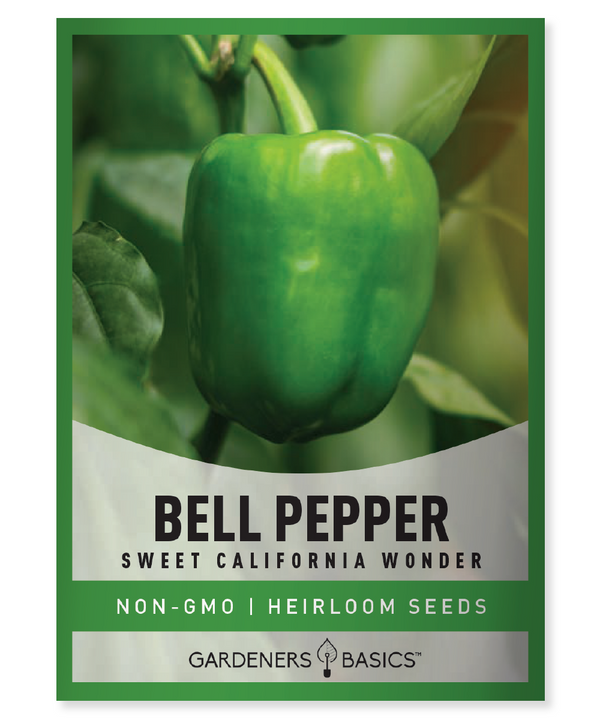
$2.49
Sweet California Wonder Bell Pepper Seeds - Heirloom, Non-GMO, Non-Hybrid, Open-Pollinated Grow your own delicious and vibrant Sweet California Wonder Bell Peppers with our premium heirloom, non-GMO, non-hybrid, open-pollinated seeds! Perfect for home gardeners and pepper enthusiasts, these versatile and… read more
A Mild Heat and an Appealing Texture
On the other hand, red pepper flakes offer a more gentle heat compared to cayenne pepper powder. These flakes are typically made from dried and crushed red chilis. They lend a moderate spice level to your dishes, making them versatile for enhancing soups, stews, and roasted vegetables. In addition to their mild heat, red pepper flakes provide a delightful texture that adds a satisfying crunch to your meals.
"Cayenne pepper powder adds a concentrated heat and vibrant red color, while red pepper flakes provide a milder heat and texture."
You can create dishes with nuanced flavors and spiciness by embracing the differences between cayenne pepper and red pepper flakes. Whether you prefer a fiery kick or a more subtle heat, understanding the characteristics of these spices allows you to tailor your recipes to suit your taste buds.
| Cayenne Pepper Powder | Red Pepper Flakes |
|---|---|
| Concentrated heat | Milder heat |
| Vibrant red color | No specific color |
| Ground powder form | Dried and crushed flakes |
| Ideal for Mexican and Asian cuisines | Commonly used in Italian cuisine |
| Suits recipes that require a fiery kick | Perfect for adding a subtle spice |
"Understanding the characteristics of cayenne pepper and red pepper flakes allows you to tailor your recipes to suit your taste buds."
Experimenting with the distinct qualities of cayenne pepper and red pepper flakes can help you create memorable dishes that are perfectly spiced. Incorporate these spices thoughtfully, adjusting quantities based on your heat tolerance and desired flavor intensity.
Incorporating Pepper into Your Diet
Whether you prefer the intense heat of chili peppers or the milder flavor of red bell peppers, incorporating these peppers into your diet can offer numerous health benefits. Chili peppers, including cayenne and hot red varieties, contain capsaicin, a compound known to have anti-inflammatory properties. Red bell peppers, on the other hand, are rich in vitamins A and C and antioxidants. Explore different heirloom pepper varieties to discover new flavors and health benefits.
Spice up your meals with the bold flavors of chili peppers. From cayenne to hot red peppers, these fiery spices add a kick to your dishes and provide several health advantages. One primary compound in chili peppers is capsaicin, which possesses anti-inflammatory properties. Incorporating chili peppers into your diet may help reduce inflammation and improve overall well-being.
Benefits of Chili Peppers:
- Boost metabolism and aid in weight loss
- Enhance heart health and reduce the risk of cardiovascular diseases
- Improve digestion and reduce the risk of stomach ulcers
- Support immune function and decrease the risk of infections
On the other hand, red bell peppers offer a delightful sweetness and vibrant color to your meals. These bell peppers are packed with essential nutrients, making them a healthy addition to any dish. Here are some benefits of incorporating red bell peppers into your diet:
"Red bell peppers are not only delicious but also highly nutritious. They are an excellent source of vitamins A and C, which contribute to a healthy immune system, vibrant skin, and good eye health. Additionally, red bell peppers are rich in antioxidants, which help protect the body against cellular damage caused by free radicals."
By swapping out traditional snacks for sliced red bell peppers, you can satisfy your cravings while nourishing your body with essential nutrients. Add them to salads, stir-fries, or enjoy them raw with your favorite dips for a refreshing and healthy snack.
| Chili Peppers | Vitamin A Content (per 100g) | Vitamin C Content (per 100g) |
|---|---|---|
| Cayenne Pepper | 44% of the DV | 7% of the DV |
| Hot Red Pepper | 29% of the DV | 27% of the DV |
When incorporating pepper into your diet, it's important to note that heirloom peppers can offer a wide range of unique flavors and health benefits. These peppers have been passed down through generations, maintaining their original taste and characteristics. To discover new flavors and culinary adventures, experiment with different heirloom pepper varieties, such as the deliciously smoky Poblano or fruity Aji Amarillo pepper.
Conclusion
In conclusion, despite their similarities, there are notable differences between Cayenne Pepper and Red Pepper. Cayenne pepper is a specific type of chili pepper renowned for its fiery heat and vibrant red color. On the other hand, red pepper refers to a broader range of peppers with varying degrees of spiciness.
Understanding these distinctions empowers you to leverage their unique flavors and heat levels to elevate your culinary creations. With its bold taste and high spiciness, Cayenne pepper is a great addition to Mexican and Asian cuisines, enhancing salsas, stir-fries, and curries.
Meanwhile, red pepper flakes, with a milder heat and distinctive texture, are commonly used in Italian dishes, such as pasta, pizza, and sauces. Using these spices in moderation is crucial as they can overpower a dish if not careful.
FAQ - Is Cayenne Pepper the Same as Red Pepper
Are Cayenne Pepper and Red Pepper the same thing?
No, Cayenne Pepper and Red Pepper are not identical. While they belong to the nightshade family of plants, they have different characteristics and uses.
What is the difference between Cayenne Pepper and Red Pepper?
Cayenne Pepper is known for its fiery heat and spicy flavor, derived from small, red chilis. On the other hand, Red Pepper encompasses a broader range of peppers, including mild red bell peppers and hot chili flakes. The heat level and flavor profile can vary significantly between the two.
How can Cayenne Pepper and Red Pepper be used in cooking?
Cayenne Pepper is commonly used in powder form to heat dishes like soups, sauces, and marinades. Red Pepper, such as chili flakes, can be sprinkled on pizzas or added to pasta sauces for a spicy kick. Red bell peppers, a type of Red Pepper, can be enjoyed raw and cooked in various recipes.
How spicy are Cayenne Pepper and Red Pepper?
Cayenne Pepper typically ranks high on the Scoville scale, ranging between 30,000 and 50,000 Scoville heat units (SHU). Depending on the variety, some types of Red Pepper can have even higher heat levels, reaching up to 100,000 SHU or more.
Where did Cayenne Pepper originate, and where can I find pepper seeds?
Cayenne Pepper originated in South America and has been cultivated for centuries. Pepper seeds from heirloom varieties can be found at retailers like Gardeners Basics, offering a wide selection for cultivation.
Can Cayenne Pepper and Red Pepper be used interchangeably in recipes?
While they are sometimes used interchangeably, it's important to note that Cayenne Pepper and Red Pepper have distinct characteristics. Cayenne Pepper powder offers concentrated heat and vibrant red color, while Red Pepper flakes provide a milder heat and texture. Understanding these differences can enhance the flavor profile of your dishes.
What are the health benefits of incorporating Cayenne Pepper and Red Pepper into our diets?
Cayenne Pepper, particularly chili peppers, contains capsaicin, which has anti-inflammatory properties. Red Pepper, like red bell peppers, is rich in vitamins A and C and antioxidants. Adding these peppers to your diet can provide various health benefits.
Can you summarize the differences between Cayenne Pepper and Red Pepper?
Cayenne Pepper is a specific type of chili pepper known for its fiery heat and vibrant red color, while Red Pepper refers to a wider range of peppers with varying degrees of spiciness. Each pepper offers unique flavor profiles and uses in cooking.
What is the difference between Cayenne Pepper and Red Pepper regarding culinary uses?
Cayenne Pepper is often used in Mexican and Asian cuisines to add heat and flavor to salsas, stir-fries, and curries. Red Pepper flakes are commonly used in Italian cuisine to add spice to pasta dishes, pizza, and sauces. Both should be used in small amounts to avoid overpowering the dish.
Seed Safe Survival Seed Kit - 35 Variety Pack
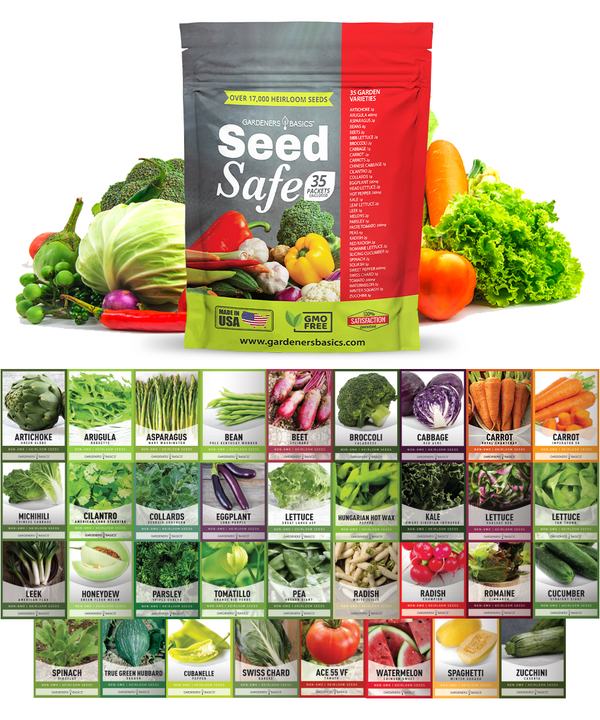
$29.95
$49.95
Seed Safe Survival Seed Kit: The Ultimate Heirloom Collection for Self-Sufficient Gardening Introducing the Seed Safe - 35 Varieties of Heirloom Vegetable, Herb, and Fruit Seeds, the ultimate solution for gardeners who want to secure a bountiful future harvest. This… read more





